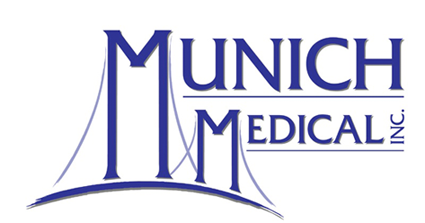Seamlessly Integrate and Enhance Your Microscope’s Capabilities
In the world of medical and dental procedures, precision is not just a goal; it’s a necessity. Your surgical microscope is one of the most critical tools in your arsenal, but what happens when your existing equipment doesn’t quite meet your evolving needs? Or when you have high-quality components from different manufacturers? This is where a Zeiss to Global adapter becomes an indispensable asset. It allows you to bridge the gap between world-class Zeiss optics and versatile Global Surgical components, unlocking a new level of functionality and ergonomic comfort without the need for a complete and costly system overhaul.
The Power of Adaptability in Modern Microscopy
Surgical microscopes are significant investments. As technology advances, the desire to upgrade or incorporate new features often clashes with budget constraints. You might have a perfectly functional Global microscope but wish to utilize a superior Zeiss binocular you’ve acquired. Or perhaps you’re transitioning into a practice that uses Zeiss systems, but you have personal Global accessories you’re accustomed to. A Zeiss to Global adapter, and vice-versa, offers a practical, cost-effective solution. These adapters are precision-engineered to ensure a secure and optically seamless connection between components from these two leading brands. This interchangeability empowers practitioners to create a customized microscope setup that is perfectly tailored to their specific procedural requirements and ergonomic preferences.
By leveraging an adapter, you can combine the strengths of both systems. For instance, you could attach a renowned Zeiss observer tube or photo tube to a Global microscope, enhancing your teaching or documentation capabilities. This not only extends the life of your current equipment but also provides the flexibility to adapt and grow your practice’s capabilities over time.
Why Ergonomics is Non-Negotiable
The importance of ergonomics in microsurgery cannot be overstated. Medical and dental professionals often spend hours in static, focused postures, which can lead to significant musculoskeletal strain, including neck, back, and shoulder pain. Poor ergonomics not only affects the practitioner’s long-term health and career longevity but can also impact focus and precision during delicate procedures.
Adapters and ergonomic microscope extenders play a crucial role in creating a more comfortable and sustainable working environment. By allowing you to customize your setup—for example, by raising the binocular tube or altering its angle—you can achieve a more natural, upright posture. This reduces physical fatigue, minimizes the risk of work-related injuries, and allows you to maintain peak concentration for longer periods, ultimately benefiting both you and your patients. Investing in an ergonomic setup is an investment in your health and the quality of your care.
Did you know?
Work-related musculoskeletal disorders (MSDs) are a leading cause of disability worldwide, with long hours spent in fixed postures being a major contributor for medical professionals. Customizing your microscope with adapters can significantly reduce this risk.
A beamsplitter adapter can direct a portion of the light from the microscope to a camera or a second observer without significant light loss to the primary user, making it ideal for training and documentation.
Many adapters are designed to be “parfocal,” meaning that once an image is in focus through the eyepieces, it will also be in focus for the attached camera, saving valuable time during procedures.
How to Choose the Right Adapter for Your Needs
Selecting the correct adapter requires careful consideration of your existing equipment and your ultimate goal. Here are a few steps to guide you:
1. Identify Your Base Microscope: Is your primary microscope a Zeiss, a Global, or another brand? This determines the base connection of the adapter.
2. Define the Accessory: What component do you want to add? This could be a binocular head, an observer tube, a beamsplitter adapter, or a photo adapter for a camera.
3. Consider the Connection Type: Ensure the adapter is specifically designed for the models you are trying to connect (e.g., Zeiss Pico to a Global accessory). Compatibility is key to a stable and optically sound setup. Incompatibility can lead to wobbly connections or an inability to achieve a focused image.
4. Evaluate Ergonomic Needs: Do you need to elevate your viewing angle or extend the reach of the eyepieces? Look for extenders or wedges that can be used in conjunction with your adapter to optimize your posture.
Upgrade Your Microscope, Not Your Entire Setup
Ready to enhance the functionality and ergonomics of your surgical microscope? Don’t let brand incompatibility hold you back. Explore our custom-fabricated adapters and extenders to create the perfect setup for your practice.
Frequently Asked Questions (FAQ)
What is a Zeiss to Global adapter?
A Zeiss to Global adapter is a specially designed connector that allows you to attach accessories made for a Global Surgical microscope onto a Zeiss microscope body, or vice-versa. This enables cross-brand compatibility for components like binoculars, observer tubes, and camera mounts.
Will using an adapter affect the optical quality of my microscope?
High-quality, precision-machined adapters like those from Munich Medical are designed to maintain the optical integrity of your system. They ensure a secure fit and proper alignment, so there is no degradation of image quality. Poorly made adapters, however, can cause focus issues or vignetting.
Can I attach a digital camera using one of these adapters?
Yes, specific photo and beamsplitter adapters are available to mount digital cameras (like DSLRs) or dedicated medical video cameras to your microscope. This is an excellent way to upgrade your documentation capabilities. It’s important to use the correct C-mount or T-mount adapter for your specific camera.
How do I know which adapter I need?
The best way to ensure you get the right part is to identify the make and model of your microscope base and the accessory you wish to attach. If you are unsure, contacting an expert like our team at Munich Medical can help you find the perfect custom solution for your needs.
